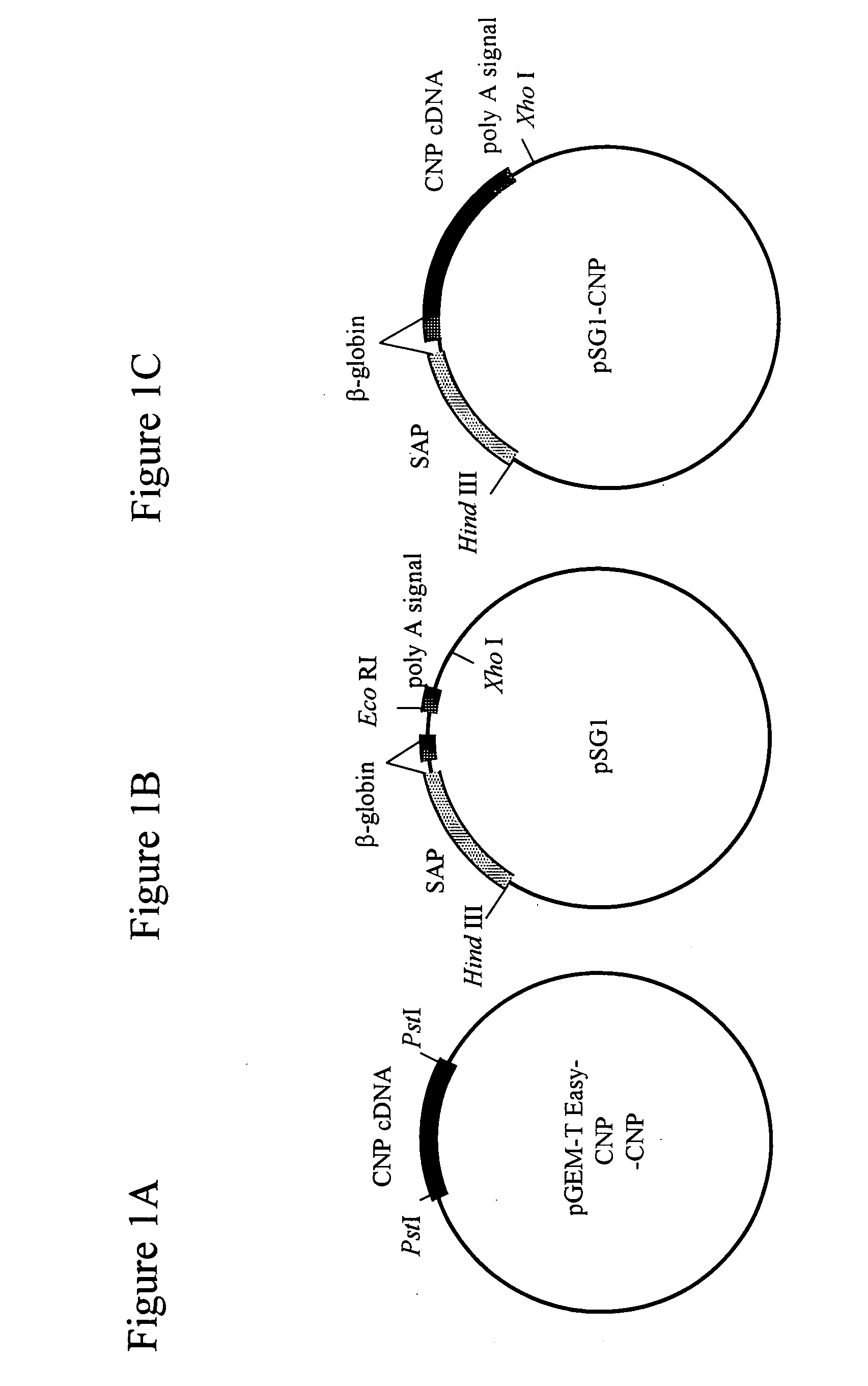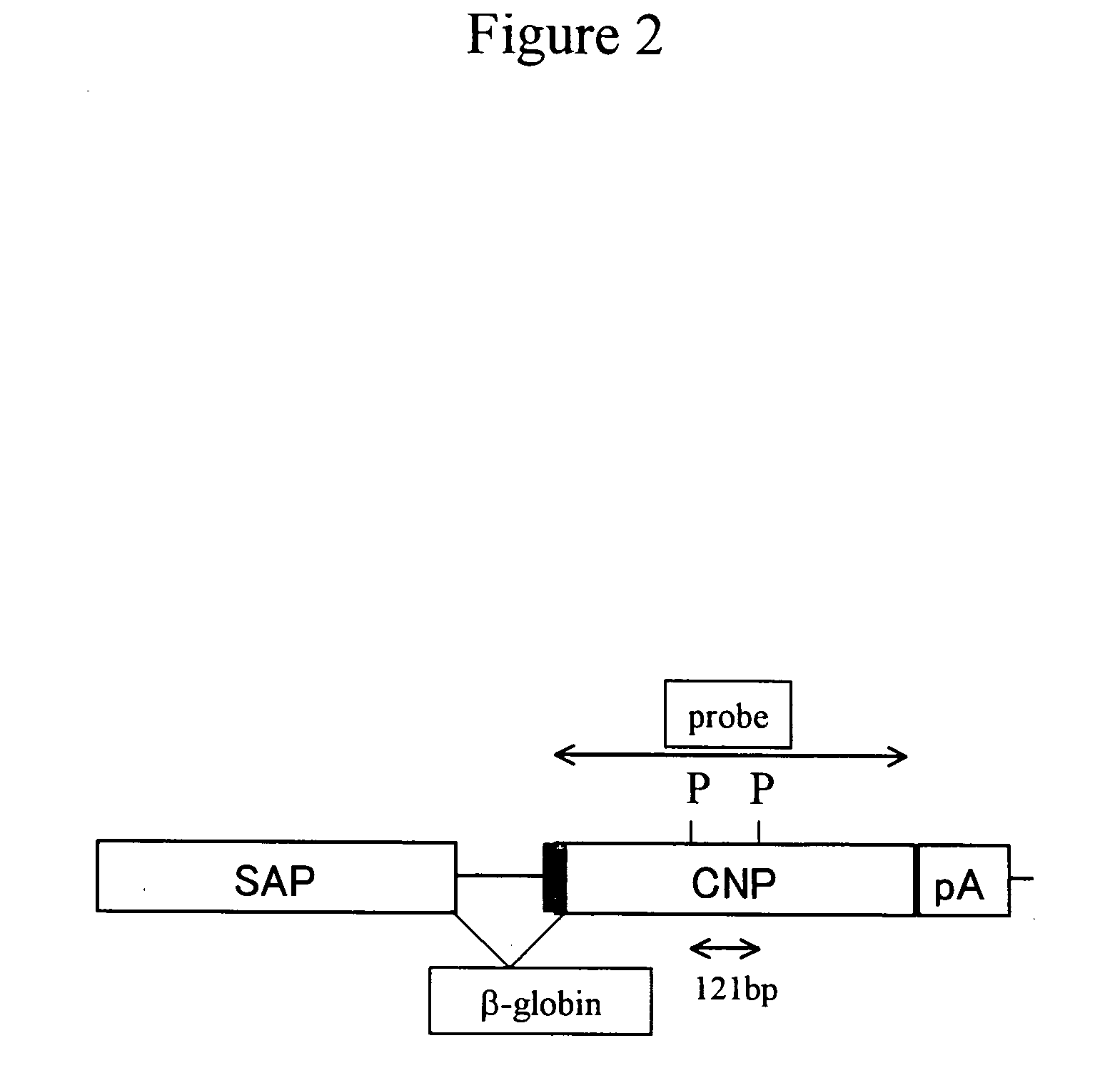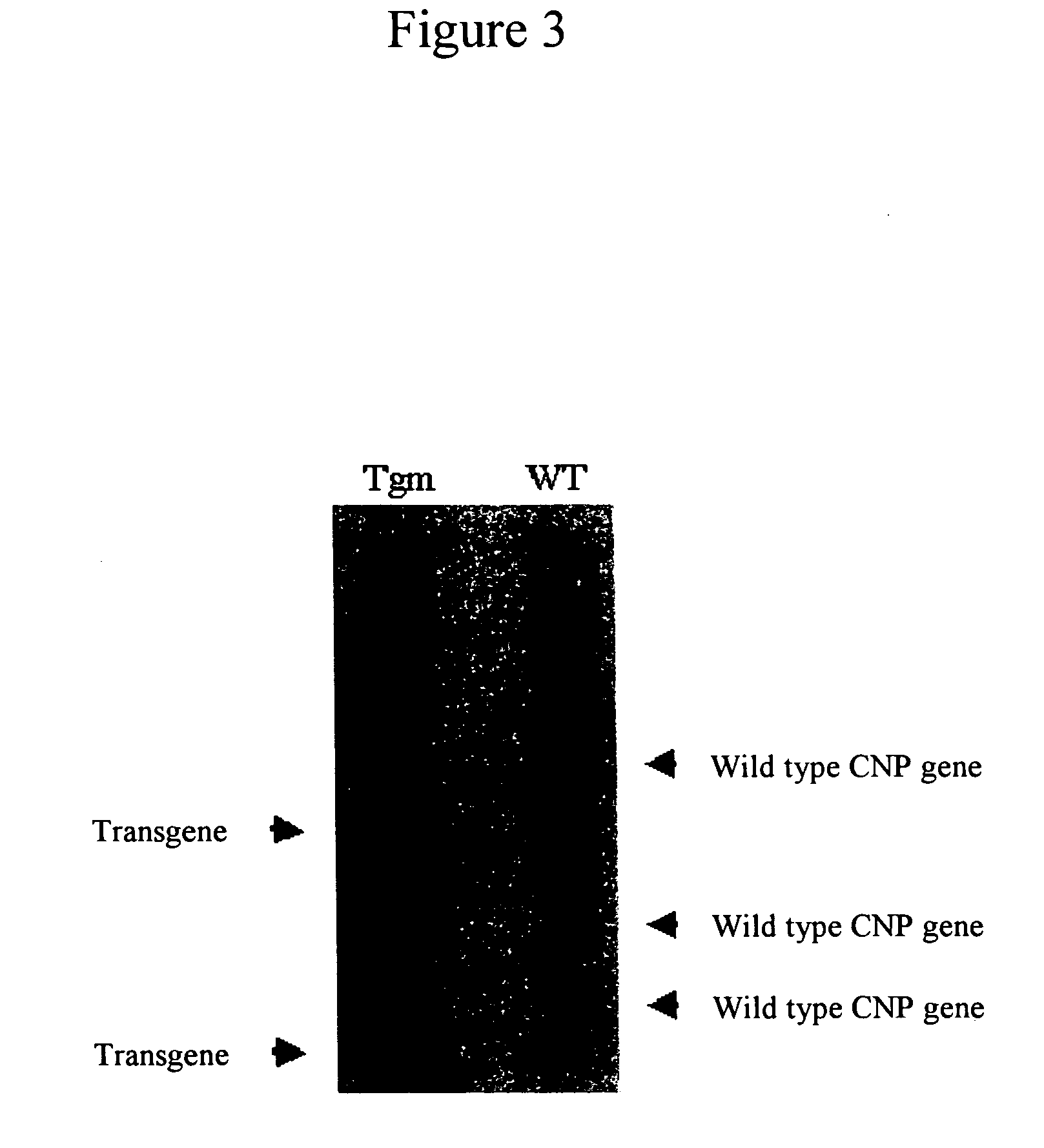Theurapeutic or prophyiactic agent for arthritis
a technology of prophylactic agent and therapeutic agent, which is applied in the direction of skeletal/connective tissue cells, peptide/protein ingredients, immunological disorders, etc., can solve the problems of cnp's inability to ensure spontaneous recovery, articular bone and cartilage damage, and no finding regarding the action of cnp on arthritis
- Summary
- Abstract
- Description
- Claims
- Application Information
AI Technical Summary
Benefits of technology
Problems solved by technology
Method used
Image
Examples
example 1
Construction of Vector for Preparing CNP Transgenic Mouse
[0149] As shown in FIG. 1A, the murine CNP cDNA (526 bp; FEBS Lett. 276:209-213, 1990) was subcloned into pGEM-T easy vector (Promega), and was then cut with Pst I and blunt-ended to prepare a mouse CNP cDNA. The vector PSG 1 (Promega; FIG. 1B) was cut with EcoRI, blunt-ended and ligated with the murine CNP cDNA, as shown in FIG. 1C, to prepare a SAP-mCNP vector (pSG1-CNP).
example 2
Production of CNP Transgenic Mouse
[0150] A DNA fragment for injection was prepared as follows. The SAP-mCNP vector (pSG1-CNP; FIG. 1C) with an inserted CNP gene was first treated with Hind III and Xho I to cut out a fragment (about 2.3 kb) containing the CNP gene. The fragment was then collected using Gel Extraction Kit (QIAGEN), and was diluted with PBS− at a concentration of 3 ng / μl, thereby obtaining the DNA fragment for injection (FIG. 2).
[0151] The mouse egg at pronucleus stage into which the DNA fragment was injected was collected as follows. First, a C57BL / 6 female mouse (Clea Japan, Inc.) was injected intraperitoneally with 5 i.u pregnant mare serum gonadotropin (PMSG), and 48 hours later, with 5 i.u human chorionic gonadotropin (hCG), in order to induce superovulation. This female mouse was crossed with a congeneric male mouse. In the next morning of the crossing, in the female mouse the presence of a plug was confirmed and subsequently the oviduct was perfused to collect...
example 3
Genotype Analysis of CNP Transgenic Mouse
[0155] Genotype analysis was performed by Southern blotting according to procedures as described below.
[0156] The tail (about 15 mm) was taken from the 3-week old mouse and treated with proteinase K (at 55° C., with shaking at 100 rpm over day and night) to obtain a lysis solution. The obtained solution was then subjected to an automated nucleic acid separator (KURABO NA-1000; Kurabo, Japan) to prepare genomic DNA. The genomic DNA (15 μg) was treated with Pvu II (200 U), then with phenol-chloroform to remove the restriction enzyme, and was precipitated with ethanol to collect the DNA. The obtained DNA was dissolved in 25 μL of TE and subjected to electrophoresis on 0.7% agarose gel (at 50V constant voltage), then the gel was treated with 0.25M HCl solution for 15 minutes to cleave the DNA, washed with water, and blotted overnight onto a nylon membrane in 0.4M NaOH solution. Thereafter, the DNA on the membrane was fixed by the UV crosslink m...
PUM
| Property | Measurement | Unit |
|---|---|---|
| Density | aaaaa | aaaaa |
| Density | aaaaa | aaaaa |
| Density | aaaaa | aaaaa |
Abstract
Description
Claims
Application Information
 Login to View More
Login to View More - R&D
- Intellectual Property
- Life Sciences
- Materials
- Tech Scout
- Unparalleled Data Quality
- Higher Quality Content
- 60% Fewer Hallucinations
Browse by: Latest US Patents, China's latest patents, Technical Efficacy Thesaurus, Application Domain, Technology Topic, Popular Technical Reports.
© 2025 PatSnap. All rights reserved.Legal|Privacy policy|Modern Slavery Act Transparency Statement|Sitemap|About US| Contact US: help@patsnap.com



